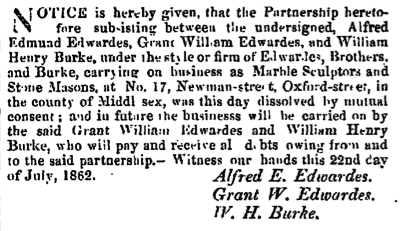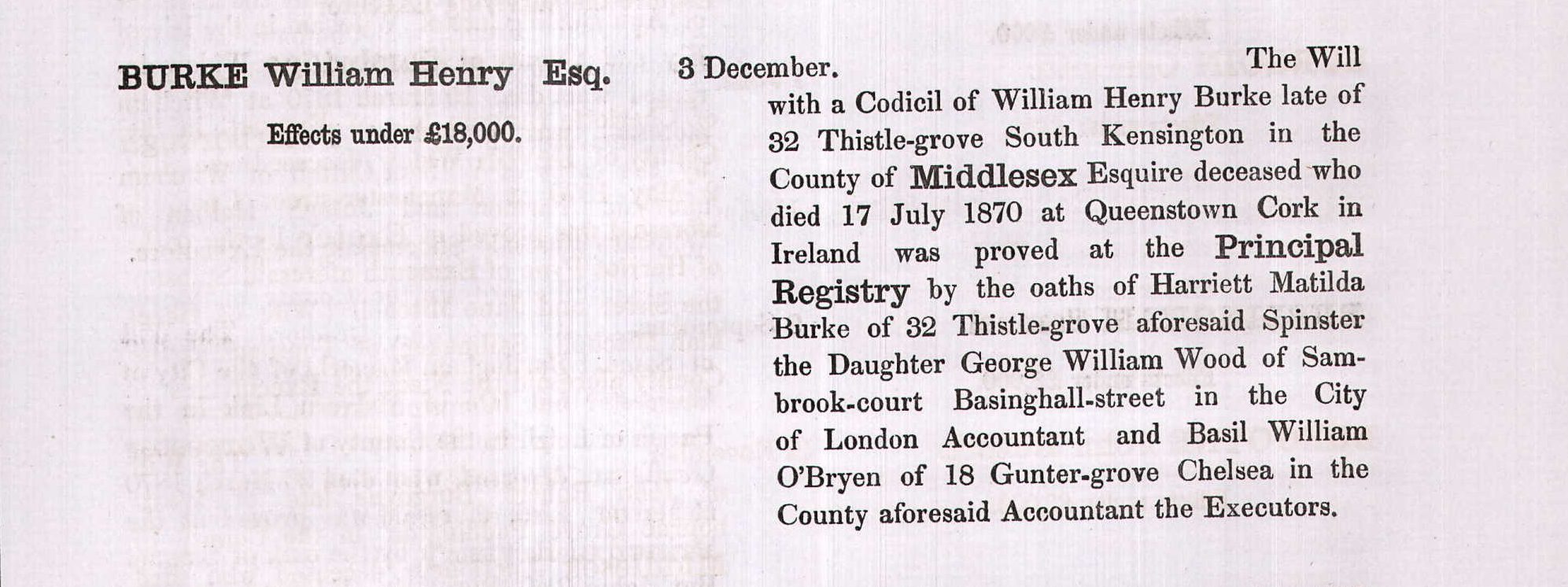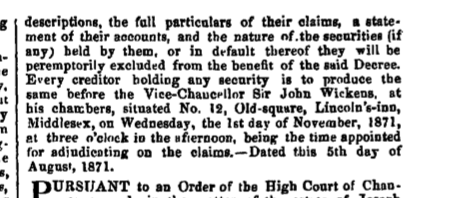The name which heads this article (writes a correspondent) was dear and familiar to thousands, and the shadow which her loss has cast over the great Convent and College of Mount Pleasant falls indeed over the whole of Catholic England. Frances Mary Lescher was the eldest child of William Joseph Lescher of London, and his wife Mary, daughter of John Hoy, of Stoke by Nayland, Suffolk. The Leschers were of German descent, and had preserved the Catholic faith unsullied since pre-Reformation times. So, too, had the Hoys; and their ancestors, the Daveys, and the Cruises, were well-known ” Papists “ in Oxfordshire. There seems to have been in both families something of the old Chivalry of the Knights of the Middle Ages—their warlike spirit, enthusiastic devotion to a great cause, the exquisite tenderness and finished courtesy. And all these things were inherited to the full by Frances Mary, the child who came into the world on May 8, 1825.
Her first education was confided to the Canonesses of the Holy Sepulchre, New Hall, where she remained till the age of 14, bearing away the gold medal, the highest prize for excellence in the school. From this time onwards she pursued her studies under the supervision of her father, whose constant companion she now became, reading with him and travelling with him on the Continent.
The Oxford Movement aroused her keenest interest, and her sympathy with the converts, to whom the Leschers’ house in Nottingham-place stood always open, was unbounded. Frances threw herself heart and soul into the great movement of revival among English Catholics, which had been set on foot immediately after the Catholic Emancipation Act, and with which the names of Bishop Wiseman, Dr.Gentili, Father Spencer, Frederick Lucas, and the elder Pugin are intimately connected, and gave in her own generation all the support a woman could give to those anxious to devote themselves to the furtherance of the Catholic cause in England. Her wide reading, brilliant conversation, and personal attraction charmed all, and she was as wise and practical as she was accomplished and ardent. The teaching of poor children—that work with which the name of Sister Mary of St. Philip is indissolubly connected—found early a place in her life; she made a classroom of the coach-house and there taught them their catechism, and more than once led the ragged waifs and strays, who formed her Sunday school class, through the streets of the city to church. This passion of her heart, for in truth it was nothing else, eventually drew her into the institute of the Sisters of Notre Dame of Namur, which is wholly devoted to the education of girls, more especially of the poor. About the time of Miss Lescher’s entrance into the order, Father James Nugent (now Mgr. Nugent), Father James Carr (now Mgr. Carr), and others of the Liverpool clergy, had invited the Sisters to take charge of some of the elementary schools in the town.
Mount Pleasant.
In 1856 they opened in Mount Pleasant a training college for schoolmistresses, and Frances Lescher, immediately on the completion of her novitiate, came to fill the post of Mistress of Studies. From that moment her name was identified with the work; the training college was what it was, and is, because of Sister Mary of St. Philip—and from that Feast of Candlemas, when she gave her first lessons to the little band of 21 students, to the last day when she sat among the 160 girls gathered round her in the splendid new hall, it has been her spirit and her heart which have been the life and light of the place. All, Catholics or Protestants, inspectors, clergy, university professors, admired her superiority of mind, respected her judgment and her counsel, and recognised her influence. “She is a woman,” said Sir Francis Sandford, then Secretary of the Education Department, “who might fearlessly place her hand even on the helm of the State.” His appreciation of her was ratified by that of his successors in office, and by many men eminent in the educational world, who from time to time visited the College. Such, in the early days, were Sir James Kaye Shuttleworth, Earl Granville (who in 1861 was President of the Committee of Council on Education), the Marquis of Ripon, and in later years Mr. Mundella and Sir G. Kekewich. MM. Inspectors of Training Colleges, Mr. Tinling and Mr. Warburton, both Canons of the Church of England, Sir Joshua Fitch, and Mr. Scott Coward, regarded Mount Pleasant as a model institution, unique in its organisation and work, and the local inspectors have not been less warm in their praise. It may be fitting to remark here that the home and centre for pupil teachers at Mount Pleasant paved the way for the foundation of similar centres for the collective teaching of pupil-teachers, first in Liverpool, then in the metropolis and other large towns. Mr. Sadler, in his recent report, says : “There is, so far as I am aware, no educational institution in England exactly comparable to that which, by the patience and foresight of the Sister Superior, has gradually been built up at Mount Pleasant. here in one long range of buildings, the slowly achieved outcome of half a century of work, every grade of girls’ education is provided for, from the primary school upwards, including the professional education of girls preparing themselves for the work of teaching in elementary or in secondary schools. Nor, in spite of the magnitude of the undertaking, is it the impression of mere size or numbers that dwells in the recollection of the visitor. It is rather the sense of quiet, cheerful, untiring, labour and of care for each individual pupil that lingers in his mind, and comes back vividly to his thoughts as he recalls what he heard and saw.” This appreciative and sympathetic report of Mr. Sadler’s was one of her last human consolations. In the beginning of December she caught a serious internal chill, and from the first, on account of her advanced age, the doctor entertained grave apprehensions as to the issue. From her sick bed she took the keenest interest in the College celebrations of the jubilee of the Immaculate Conception, arranging for the solemn Act of Consecration, and listened to the notes of the hymns borne up from the procession winding along the corridors below. On the morrow she received the Last Sacraments in great peace, and from that moment she laid aside completely, with the simplicity of a little child, the burden of her solicitous work, to give all her thought and care to the last great journey. But her splendid constitution, the widespread and incessant prayer sent up to God for her dear life, and, above all, her own extreme clearness of mind and freshness of memory made her sisters and children hope against hope. A serious crisis on the afternoon of Friday the fifth took away all illusion; it was repeated on Saturday, and on Sunday night at about 11 p.m. she gave up her soul into the hands of God, very tranquilly and gently. Her noble life had closed nobly, fittingly. All that the Church could give her she had; and two days before the end the Bishop had brought her the supreme consolation of the Holy Father’s blessing. To the last she kept an unclouded mind, visibly uniting herself to ‘the prayers and hymns, pressing the crucifix to her lips, lifting her feeble hand to make one of her old large signs of the Cross as she received her frequent absolutions—to the very end her own sweet, simple, great self.
She was laid out in the community-room in all religious simplicity with no other pomp than that of the kneeling Sisters, who watched her night and day, and the never-ceasing influx of her dearly loved and faithful “old students,” whose grief was pitiful to behold.
The Funeral.
On Thursday last Bishop Whiteside sang the Solemn Requiem in the beautiful convent chapel, whose sanctuary was entirely draped in black. The Mass was admirably chanted by the diocesan choir, conducted by the Rev T. A. Walmsley. The Right Rev. Mgr. Carr, V.G., acted as assistant priest ; Canon Gordon, of Birkdale as deacon; Canon Banks, of St. Edward’s College as subdeacon. The deacons at the throne were Canon Kennedy and Canon Cosgrave ; the masters of ceremonies the Revv. J. Clarkson and W. Slattery. More than 80 priests were present in the chapel amongst them Provost Clegg, Mgr. Marsden, Canons Beggan, O’Toole Barry, Singleton, Richardson, Chisholm ;the Rev. T. J. Walshe, chaplain to the community; Father Hayes, Rector of St. Francis Xavier’s; the Rectors of the churches of Liverpool and the outlying district, and representatives of different religious orders.
Immediately after the absolutions the cortege passed from the chapel down the main staircase and along the spacious corridor to the door of the new wing in Hope-street, where a long line of coaches awaited the mourners—clergy, sisters, and former students with other friends, all anxious to give this last testimony of esteem and affection to her whom they had loved and venerated in life. But the most touching part of the funeral was the assemblage of poor children drawn up at intervals along the route in front of each school with their parents and teachers, patiently standing in frost and fog, the boys with raised caps, girls with joined hands and bowed heads. Some 40 coaches reached the Great Crosby Cemetery, where the procession formed and passed through lines of teachers and former students proving by their presence and their sorrowful demeanour that she whom they mourned had been their best and truest friend.
Expressions of sympathy and condolence have flooded in upon the Sisters from all quarters ; telegrams were received from the Marquis of Ripon, from H. M. Inspectors, from the Professors of the Liverpool University ; letters from his Grace the Archbishop of Westminster and the bishops and clergy all over the British Isles. A vote of sympathy was passed by the Association of Principals of Training Colleges holding their annual Conference in London, and “carried in silence,” wrote the President, “by the whole body of members rising in their places.” A deputation from the University conveyed expressions of esteem and regret from that body ; and the Liverpool Education Committee passed a unanimous resolution : “That this Committee desire to express their deep regret at the death of Miss F. M. Lescher, Principal of the Mount Pleasant Training College ; to place on record their high appreciation of the services rendered to the cause of education in the city ; and to convey their sympathy with the authoritieS of the college in the loss they have sustained.”
The main lines, large and simple, of Sister Mary of St. Philip’s striking personality were apparent to all who came into even passing contact with her. A countenance, noble and eminently good, and easy dignity of presence that was far removed from stiffness or condescension, and above all the genuine and unaffected interest which she took in the doings, plans, joys and sorrows of the most casual visitor, and what someone has happily called “that princely gift of making herself all in all,” these things charmed and won multitudes. Multitudes too, recognised and admired her royal gifts of mind—her quick and sure judgment, her wise and temperate counsel, her quite exceptional capacity for organisation and. administration and few who knew her ever so little, but felt the charm of the freshness, the enthusiasm, the youngness of heart which were so beautiful and harmonious a contradiction of her ripe years. Others have been privileged to see more— the grand simplicity of her daily life, devoting to others, without suspicion of heroism, time, talents, labour ; the large sympathy that went out to the smallest the most trivial of sorrows ; the ever-growing gentleness and forbearance and long patience ; and that lowliness of spirit which was so marked and beautiful a trait in one so great. The fragrance of all these things and many more is with those who immediately lived and loved and laboured under one roof with Sister Mary of St. Philip, and they are to them part of her very name. Yet not to them alone does that name belong, but to the whole Catholic Church in England, to the poor of Christ and the priests of Christ, wherever they suffer and toil between its three seas. R.I.P.
The Sisters of Notre Dame, Mount Pleasant, desire to thank most warmly all those who have written to express sympathy with them in their sorrow. Owing to the large number of letters received from friends and from students, past and present, it is impossible to write an individual acknowledgment.
The above text was found on p.26, 31st December 1904 in “The Tablet: The International Catholic News Weekly.” Reproduced with kind permission of the Publisher. The Tablet can be found at http://www.thetablet.co.uk .
 In the Matter of the Petition for Dissolution of the Marriage of Rosette Edwardes.
In the Matter of the Petition for Dissolution of the Marriage of Rosette Edwardes.




